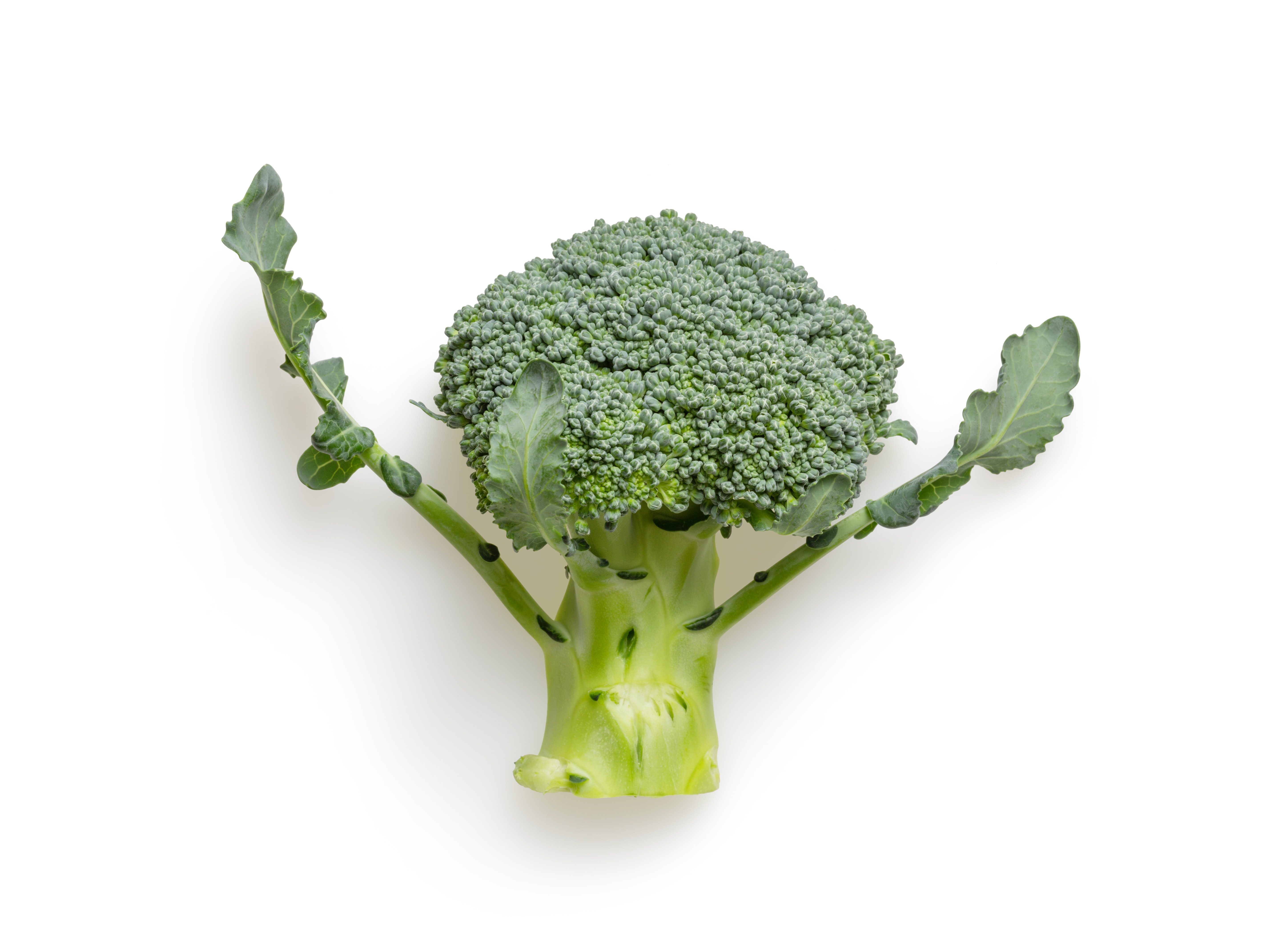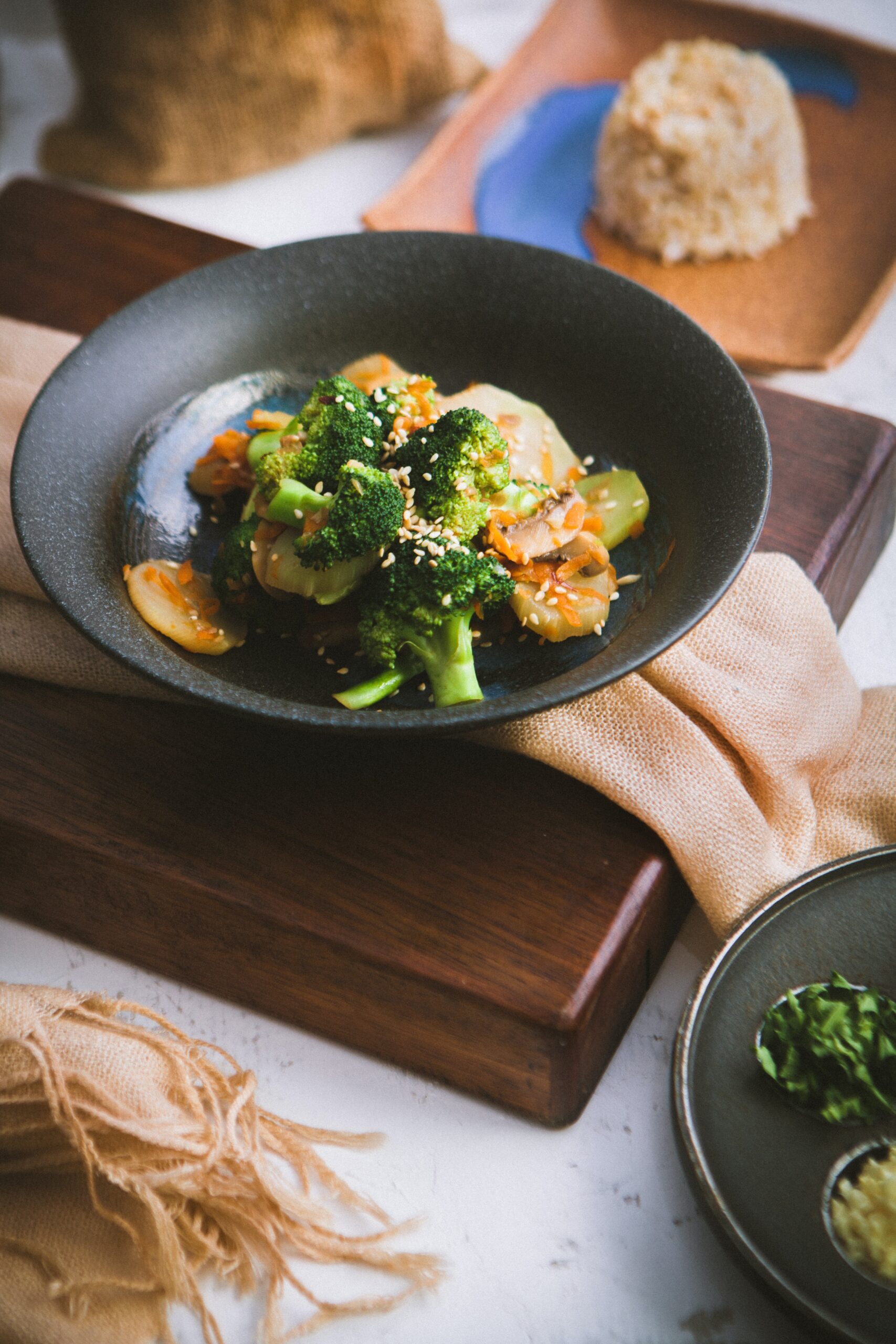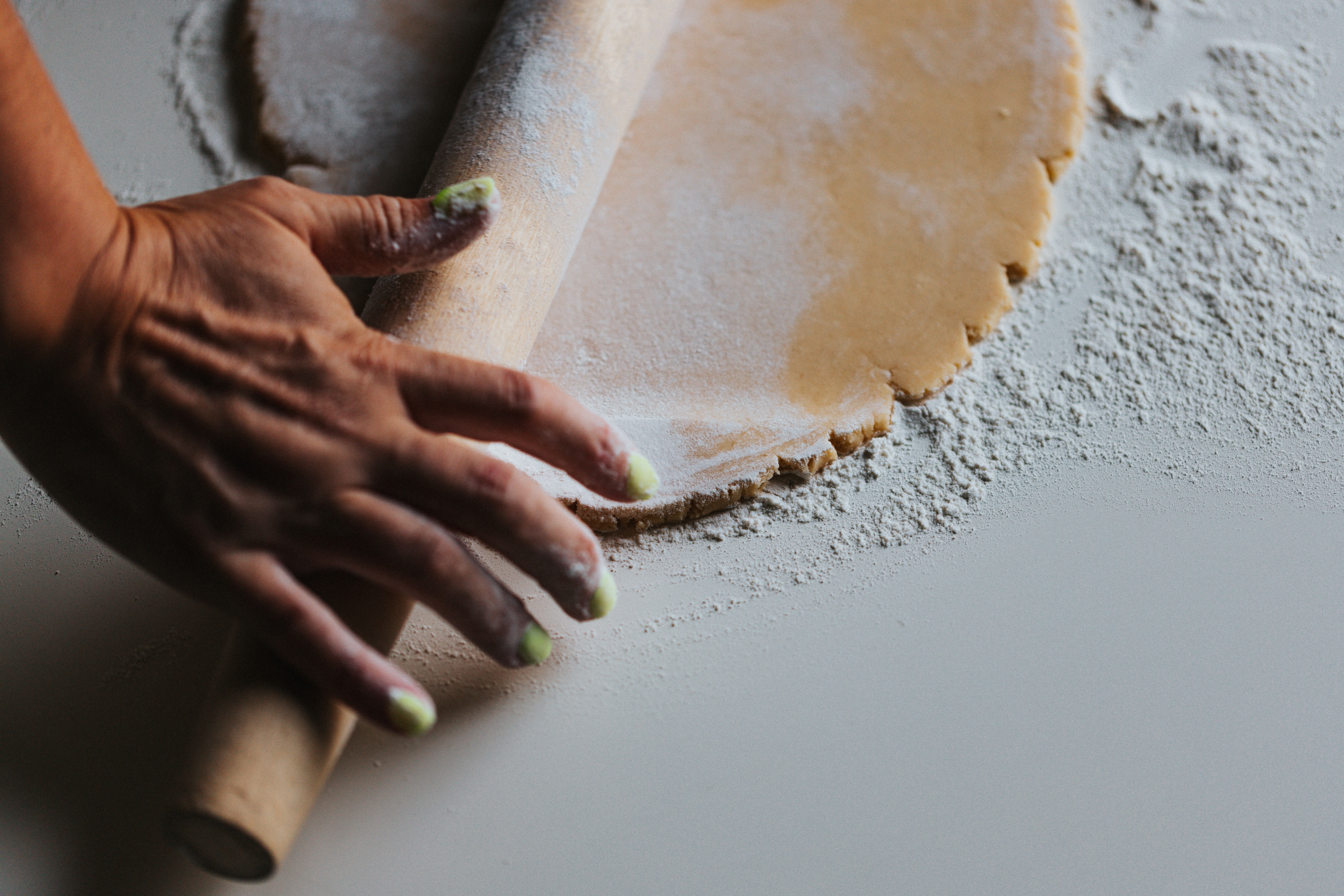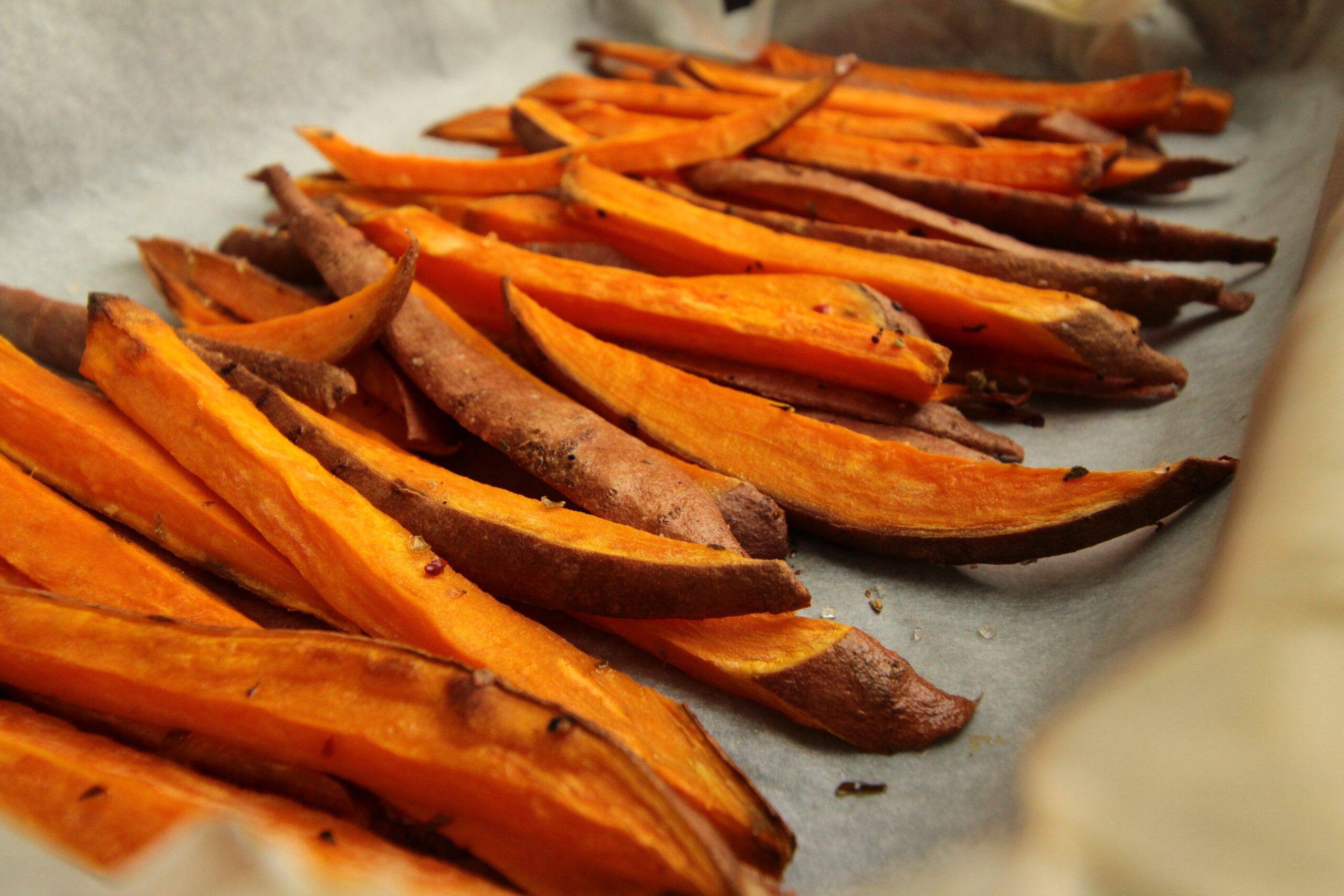As a health and nutrition coach I believe that a foundation of health is what you put in your body. In these easy recipes are foods that will help you live a healthy life with Gilbert’s Syndrome. My main tip is always- eat more plants! Plant fibre, nutrients and fats are fantastic for keeping you well. As the World Health Organisation said, in its 2021 review of plant based diets
Overall, a diet that is predominantly plant-based and low in salt, saturated fats and added sugars is recommended as part of a healthy lifestyle.

Why are plants so great if you have Gilbert’s Syndrome?
If you have Gilbert’s Syndrome there are numerous key benefits you can get from plants. Cruciferous vegetables (broccoli, sprouts, etc) are great for supporting your liver function.

Broccoli has been found to contain a phytochemical (plant chemical) called sulphoraphane, which enhances the phase two-detoxification pathway in the liver.
Fibre is great for keeping you feeling satisfied and sustains energy levels. It supports gut health which supports immunity and better absorption of other nutrients. https://www.ncbi.nlm.nih.gov/pmc/articles/PMC8153313/
A plant based diet is also low in fat and the types of fats eaten are generally essential and good for you.
This report ‘Wellbeing and Veganism‘ discusses the role a vegan diet has in potentially reducing anxiety and enhancing wellbeing.
How you can make positive changes easily
As a coach I start with adding in the good stuff, not depriving you of things you enjoy. Getting rid of less healthy food will come more naturally once you have developed an appreciation of how good food helps you feel healthier. (I also don’t believe in a calorie counting approach to a healthy diet, as different foods are absorbed differently, by different people, regardless of calories. If you are ever coached by me you’ll find out more about my science based approach).
Starting with small habits is a recipe for long term success, rather than drastic change overnight. Your taste buds, existing habits, your brain and body, will have set patterns you’ve developed over time that make it really hard to transform in an instant. It takes repeated attempts to change a pattern, as it has become ingrained. Making small, easy changes is a step by step road to success.
Here are some small changes you could make: eat a veg soup or small salad before your main meal; add a tin of tomatoes or pulses (beans or lentils) into a sauce or stew; add chopped apple or berries to cereal or ice cream or yoghurt, add some sweetcorn to a plate at dinner, or mashed butternut squash. The possibilities are endless.
These easy recipes, below, will help you make some simple changes and live a healthy life with Gilbert’s Syndrome.
Here are more posts on what food will help with Gilbert's Syndrome. → https://gilbertssyndrome.org.uk/the-liver-diet/ → https://gilbertssyndrome.org.uk/detox-diets-and-gilberts-syndrome/ → https://gilbertssyndrome.org.uk/sesame-magic-for-your-liver/ → The How Not to Die cookbook has lots of tasty recipes and you can see from the reviews that many readers report increased energy.
Some people say that eating more plants is expensive. But it doesn’t have to be. In fact, you can save a lot of money with the right choices. This study from Oxford University shows that a vegan diet can slash your food costs by a third!
Make your veggies cheaper and last longer by buying frozen. A bag of green beans or broccoli costs less than a pound from discount supermarkets in the UK. Look for reduced labels – it’s still fine to eat. Buy the loose veg and in the amount you need – it’s often cheaper and there’s no waste. Try something new when it’s in season and better value. Get the wonky versions – lots of supermarkets sell these now, and they are every bit as good as the not so wonky!
An advantage to adding in plants is that you are likely to feel fuller for longer, with sustained energy. This really helps manage your fatigue and prevents you from falling back on energy killers such as sugary food.
Here are some key ingredients, below, to make a wide range of tasty and healthy meals. You can add in your favourite herbs and spices for different flavours. I only mention four vegetables here, which you can swap through the recipes and experiment with other veg such beetroot, cauliflower or parsnips. So, here we go, some easy recipes to live a healthy life with Gilbert’s Syndrome…
Stock up on these key ingredients to get started:
- Vegetable oil
- Wholewheat self raising flour
- Nuts of your choice (walnuts are my suggestion) or sesame seeds – get the ones in the baking aisle as they are cheaper and the broken nuts are less expensive than whole ones.
- Salt
- Pepper
- Lemon juice
- Garlic puree
- Broccoli
- Sprouts / cabbage or another green
- Carrots
- Onion
- Sweet potato
- tinned tomatoes
- pulses of your choice
Recipes

Versatile carrot soup
serves four, or freeze spare portions for another time
Ingredients:
- vegetable oil 1tbsp
- 5 large carrots (grated)
- Small onion (roughly chopped)
- 800ml of vegetable stock, or water with some garlic, salt and pepper plus lemon juice.
- Flavour with whatever herb or spice you have – coriander, cumin, ginger, paprika, black pepper etc.
Steps:
- In a large deep pan heat the oil and fry the onion gently for 5 minutes until transparent
- Add the grated carrots and cook for a further 5 to 10 minutes
- Add the vegetable stock and coriander (or other herb or spice) and simmer for up to 20 minutes or until the carrots are falling apart
- Put through a blender or mash with a potato masher
Variations
Add a potato and remove a carrot if you would like it less carroty
Top with toasted cashews for added protein

Brilliantly simple broccoli
Stir fry broccoli in a dash of oil, with some sesame seeds (or other nuts if you prefer). Add garlic, black pepper and salt and a dash of lemon juice to taste. Or a dash of soy sauce.
Super sprouts
Sprouts aren’t to everyone’s taste, but they are really good for you. If you don’t like them, try cabbage as a substitute – savoy, red or white. Personally I love sprouts!
Here are two ways to deal with sprouts:
- I suggest part cooking in the microwave first (just 2 or 3 minutes) if you don’t like them too crunchy, or they are from the freezer. Slicing them makes them a little easier to deal with on the plate, and they stir fry more quickly. Then stir fry as per the broccoli and add walnuts. If you have sesame oil to stir fry them with that will transform the flavour.
- You can also drown them in a rich tomato sauce by cooking tinned tomatoes with garlic, salt and pepper, plus some lemon juice and a dash of sugar, ketchup or sweetner to taste. Microwave, steam or boil the sprouts, then finish off by cooking in the tomato sauce for 5 minutes. The richness of the tomatoes really complements the sprouts.
Veg pie
serves four, or freeze spare portions for another time
ingredients:
pie contents-
- 2 carrots
- 1 large or 2 medium sweet potatoes
- 1 tbsp oil
- 1 leek
- 1 tin of chopped tomatoes
- Cooked lentils or a tin of baked beans
- garlic, salt, pepper, lemon juice to taste
pastry-
- 100g flour (preferably wholemeal)
- salt and pepper
- 50g of oil
- dash of cold water

Steps:
Make pastry –
- Flour, salt and pepper to taste, and oil, mixed together with a fork to form crumbs, add some cold water and shape into a stiff dough. Put in the fridge whilst making the pie contents.
- Put the oven on to heat (180 degrees celsius)
Pie contents –
- Chop the carrots and sweet potatoes into similar sized chunks, pop in the microwave for 5 minutes to begin to soften.
- Fry the leek in the oil for 5 minutes, then tip in the part cooked carrots and sweet potatoes.
- Add tin of chopped tomatoes and cooked lentils or a tin of baked beans (or any other bean).
- Add garlic, salt and pepper to taste. Add a dash of lemon juice
- Simmer for 15 minutes then tip into a casserole / pyrex dish.
- Roll out the dough and place on top of the above ingredients in a casserole/pyrex dish.
- Cook in a warm oven for 30 minutes – or until the pastry is browning
You could add sesame seeds to the pastry to give it a nutty flavour.
Change the seasoning for different flavours – curry powder, smoked paprika, cumin and chilli powder.
If you prefer you could make a mashed sweet potato topping instead of the pastry and swap around some of the veg for what else you might have available.
Sweet potato options
Sweet potato can be mashed with carrot or parsnip for a really sweet and tasty alternative or addition to the usual mashed potatoes.
Or, chip the sweet potatoes and roast in a shallow tray with a splash of oil.

Of course, a plain baked sweet potato is always lovely! You can also make it into a soup instead of the carrot, or as well as.
PS – if you need to satisfy a sweet tooth, here’s my favourite carrot cake recipe – it’s so simple and quick https://veggiedesserts.com/vegan-carrot-cake/
I hope these have given you some ideas to be creative and quick with simple ingredients available in any supermarket or grocer.
Here are more recipes for you in this downloadable pdf


Is a more balanced diet of all the major food groups, and eating more, locally sourced fruit and vegetables a better option than going vegan?
We grow our own salads (all year round) as well as summer vegetables and fruit; eat a varied diet (mainly Mediterranean); eat meat, fish, eggs and dairy; no added salt; no sugar in drinks; rarely eat desserts and everything is cooked from scratch.
We don’t eat processed food or junk food.
I do not cook with a microwave (will not have one in my house).
Does having Gilbert’s mean I have to be vegan to be healthy?
Dear Michelle, thanks for your great question and for saying more about your approach. You sound to have a really great diet, avoiding processed food, sugar, salt and eating home grown veg! It’s so great to hear about it. There is no doubt that a plant based diet has the most evidence for longevity and good health. Being plant based does not necessarily mean entirely avoiding animal products. However, I am a vegan and a balanced whole food vegan diet is one of the best there is to achieve health goals. Just to reiterate – this doesn’t mean that being vegan is necessary. As a vegan I can’t advise what animal products are healthy to eat as this is not my approach, hence the advice on this website is from a vegan perspective. Key factors for people with Gilbert’s Syndrome include fat and sugar content of food, a good fibre content to support gut health and motility, regular meals to stabilise blood sugar (which high fibre, low sugar foods help with), and ensuring plenty of nutrients to support a healthy body and prevent illness (whole foods and plants are great for all of this). Vegetable sources of protein also ensure this – such as lentils, chickpeas, kidney beans etc, tofu and other soy products. Lots of meat and dairy products have residual antibiotics, growth hormones, are treated with chemicals to preserve them and fish may have heavy metals or other toxins if farmed – which is why I would caution people to be careful about the quality and source of any animal products. I do hope that helps explain my approach. It’s great to hear you have such a positive lifestyle in terms of your nutrition. Wishing you well